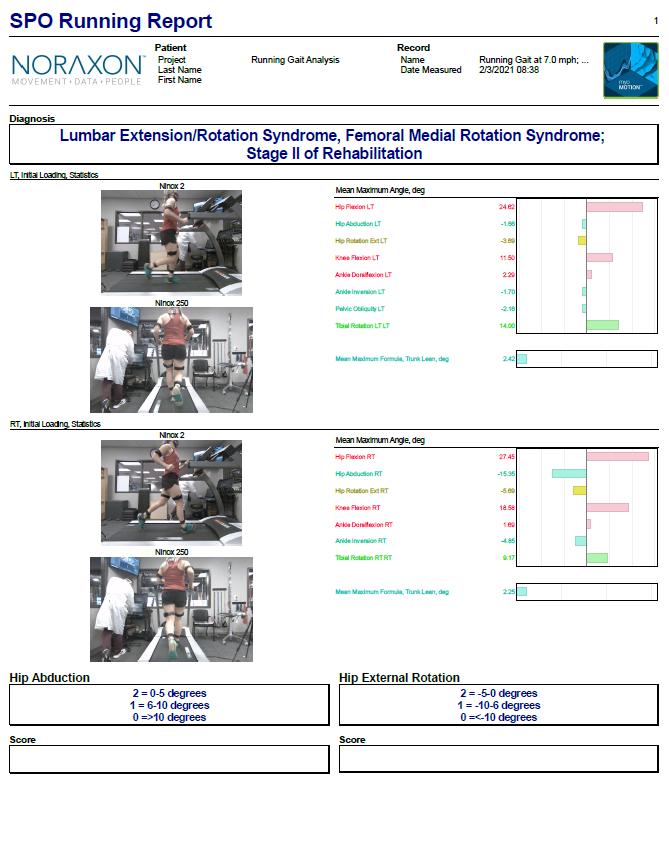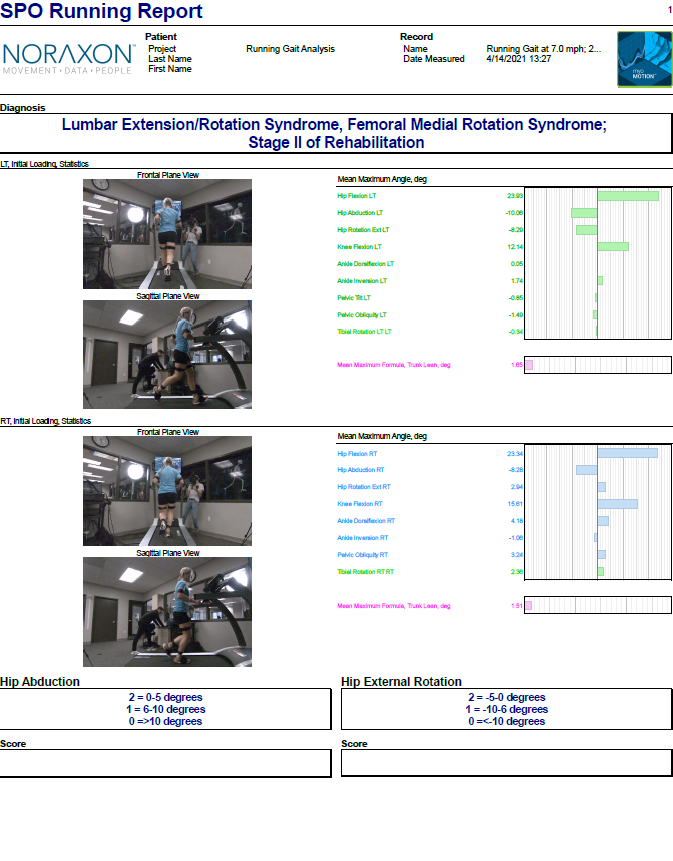Subject’s age: 40
Subject’s gender: Female
Reason for visit:
The subject reported to physical therapy initial evaluation with complaints of a 9 month history of right buttock and leg pain as well as numbness and tingling that radiated into her entire right lower extremity. The onset of these pains and paresthesias came after a sprint workout when she felt a “pull” in the back of her right leg. She explains that while sitting at work she will intermittently get numbness and a “cold feeling” on the dorsum of her right foot, anterior shank, and lateral thigh up into the buttock region. She explains that although running no longer exacerbates her symptoms, that sitting, driving, forward bending, and deadlifting all increase her pain.
She is a well-appearing 40 year old female who enjoys being very active. She enjoys lifting weights and, in particular, is a competitive distance runner. She is looking to train for a 50-mile race coming up in September of 2021 but would otherwise be unable to if she has to deal with this pain. She is looking to further understand her movement and would like her running gait further analyzed to determine if there is anything she can do to help relieve her pain.
Noraxon hardware used: 3D Motion Capture & NiNOX High-Speed Video Cameras
Key Improvements Shown in Comparison Report:
Due to the nature of her underlying movement diagnosis, the subject struggled most at midstance phase during running gait where she needed the most hip stability.
In her initial assessment, she demonstrated excessive hip adduction, excessive hip medial rotation, excessive help obliquity, decreased hip flexion, and decrease forward trunk lean.
After our treatment was performed (approximately 2.5 months), each of the above metrics improved significantly (>5 deg improvement). Trunk lean was the only metric that did not improve >5 deg.
Key Findings:
Initial Loading Findings:
- Excessive lumbar rotation (>5 deg)
- Excessive pelvic rotation (>5 deg)
Midstance Phase-Right Findings:
- Excessive pelvic obliquity (>5 deg)
- Excessive hip adduction (>5 deg)
- Excessive hip medial rotation (>5 deg)
- Insufficient hip flexion (<25 deg)
- Insufficient anterior trunk lean (<10 deg)
Treatment summary:
The subject’s treatment plan initially included isolated exercise to improve her ability to utilize hip flexion without lumbar spine compensatory motion. This was done in conjunction with intrinsic hip flexor, lateral rotator, and abductor muscle strengthening. After successfully improving the above movements and weaknesses, further functional and integrated strengthening movements were performed to improve her trunk and hip control both bilaterally and while on a single leg to best replicate the stability that would be needed while running competitive distances. She was also instructed on improving her anterior trunk lean while training during her runs.
Assessment & Training Outcomes:
After 2.5 months of the above treatment, the patient’s buttock/proximal hip pain and lower extremity paresthesias were completely alleviated. Per her report, not only does she feel stronger in her hips, she is also able to exercise and run without any pain or numbness into her right lower extremity which frequently occurred prior to physical therapy intervention.
Upon completion of treatment, patient reported that she is able to sit for greater than 4 hours and run 23 miles without pain, numbness, or paresthesias.
Initial Evaluation

Post-Treatment




